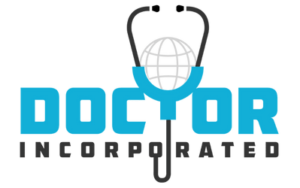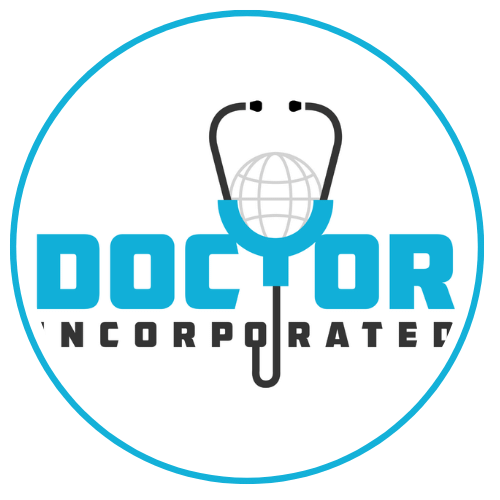
I admit it, my wife and I are very frugal and we have taught our children to be the same. One place this shows up is with beverages when we eat out. Having a family of 7, the quickest way to add $25 to a periodic restaurant experience is to order drinks of any kind. So we did what any good frugal family does, we ordered water, it was free.
But on those very special occasions when we busted out the “get whatever you want” offer, it was special to order a soda. But what was even more special was a “free refill”. When that straw slurped to the bottom of the cup, it was exhilarating to know that we could get more. In essence, the cup was bottomless.
Bottomless anything creates a sense of indulgence, freedom, and security. We often ignore the normal boundaries that guard against overdoing it or the mental signals of self-control that provide healthy limits. Certainly running out of the bottomless product, rarely crosses our mind. Self-regulation is typically the limiting factor.
Physicians have become conditioned to a bottomless supply of patients, and the downstream income associated with those patient visits. Employed and contracted physicians, in particular, seem to expect their employer to serve up the multitude of patients on a silver platter. After all, isn’t that why you were hired and given such a sizable contract?
Cracks in the Wall
But healthcare economics doesn’t always work like this, even though healthcare is considered relatively recession-proof. The growing populations of patient healthcare needs, coupled with a widening physician shortage reinforce the idea that physician-patient micro-economics are unaffected by most geopolitical forces.
Physicians have discovered employers can’t always deliver on bottomless supplies of patients. Yes, COVID-19 has uncovered this reality, but the tension preceded the pandemic.
Patient Volume
The patients may not always be there as promised. The forces that drive patients to your practice no longer include just hanging a sign or putting your name on a door. Healthcare is complex, and even great doctors can find them-self in a struggling practice depending on insurance alignments, market share competition, and the effectiveness of your employer’s marketing department.
Economic Challenges
Your employer could have economic problems that trickle down to you in the employment pool. It’s remarkable how many employers hire robustly during a good fiscal year, only to tighten the screws the next year when the pendulum swings back the other direction. Just like any responsible corporation, this often leads to re-organizing and re-structuring service lines.
As a primary care doctor, I realize that we are rarely given much organizational capital since we are typically a non-strategic service line. It’s the specialist who gathers all of this attention as big money makers, and depending on the year, the star of the show will vary.
Primary care is typically a money loser among the service lines, and therefore, is considered to have a poor ROI with capital investment. In fact, it tends to be a necessary loser so that others in the system can be winners. Most corporations have stripped all of the profitable components in primary care offices and centralized them somewhere else in the enterprise. Ultimately, it’s the primary care market share that we call “patients”, but are labeled corporately as “populations”, that get pushed through the system. This leads to downstream income, which proves the primary care worth. Primary care doctors are front-line influencers who have been stripped of their clinic profitability, for the benefit of the system. Never forget this when you sit at those monthly or quarterly physician network meetings and they flash on the screen how much money you are losing. It used to confound me as I personalized being a loser, but now I have learned to accept having a big “L” slapped on my forehead. It’s for the good of the enterprise.
Contracts
Employment contracts based upon guaranteed salaries, or productivity formulas, typically do accomplish their desired purpose. You show up to work, perform as an excellent physician, and collect a predictable income and benefits. This works well if the flow of patients is indeed bottomless, and if your employer does their duty to build and support your practice.
But as many have recently discovered, the flow of patients is not always bottomless. Thus your productivity-based pay can drop, even precipitously in a pandemic.
Additionally, your contract can be unilaterally breached, and your income is NOT guaranteed. Many have learned this unfortunate truth during the COVID-19 crisis. Too many physicians blindly sign their employment contracts, myopically focused on the salary, and ignore all the other critical details. It’s those details that are often slanted towards your employer, and they smartly pull it forward at times like this. I strongly encourage you to always hire an experienced healthcare attorney to review your contract.
Administrator Turnover and Promises
The administrator who hired you will eventually leave the organization, as they all have very limited lifespans. Their replacement doesn’t know you, your value, or the unwritten understandings in your contract. In fact, they might not even want to get to know you, or they may have a new program that is much different than the understanding you had with their predecessor.
Bottom line, you have to prove your worth all over again and re-gain the relational and corporate capital associated with being favorably viewed by the layers of administrators that have oversight over your practice. Your value to your employer is not bottomless, in fact, it has an expiration date that follows the lifespan of your direct report administrator.
You Are A Faceless Line Item
The hard truth is that you are just a line on a spreadsheet in a massive healthcare enterprise with hundreds of lines on innumerable spreadsheets.
It’s not uncommon to find out your support structure and resourcing for your clinical services is much weaker than you were promised when you were recruited. Staffing hours, number of support staff, and equipment all can be frozen due to budget issues, even though you were assured to receive them. I especially have seen this play out when a physician is recruited in one budget cycle only to start practice in a different corporate budget cycle. This happened to my new family practice partner who did some additional training in OB ultrasound with the plan to do it in our office. Those ultrasound machines are expensive, so its addition to our office has been delayed for a year. Not good in the context of keeping one’s skills sharp! In these situations, you suddenly find you are competing in a different pool of money with new preferred capital competitors, and administrators with new agendas who have moved on from your little world. So, although you expect the promised bottomless support to help you and your practice succeed, the support can turn out to be lacking. In fact, your practice support could be very short-lived. Timing is everything.
Quality of Life
Your quality of life in your work community is not bottomless either. Although you did your homework on learning about the community, and you listened to the recruiter tell you about the community’s strengths, it is very difficult to understand community life prior to immersing in it. In order to reduce the risk of this happening, it is no surprise that less than 5% of new residency graduates will look for jobs in communities of less than 25,000 people. Living in a rural community myself, I am very aware of this truth as we travel the long road of recruitment for any service line. No doubt that larger communities offer a greater sense of bottomless lifestyle and social circle choices. But there have been many disillusioned doctors and their spouses who sign up to work somewhere, only to find out that quality of life outside of medicine is impaired by their geography.
Today’s doctors look for bottomless opportunities that allow for nearly limitless upsides. The best situations often maximize professional autonomy and community need for your services. The best employers are the ones who are willing to fairly share in this bounty with you.
Bottomless win-wins are hard to find nowadays.

Dr. Inc.


